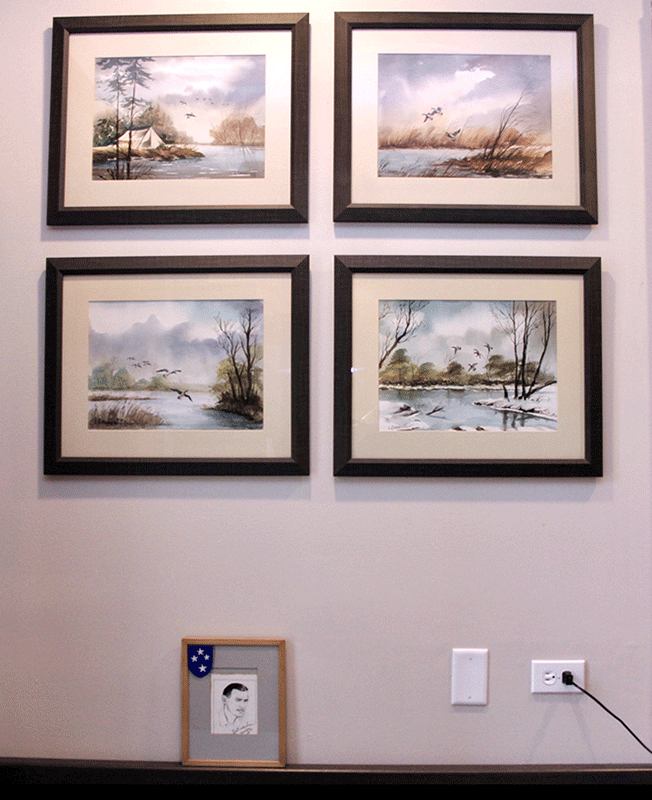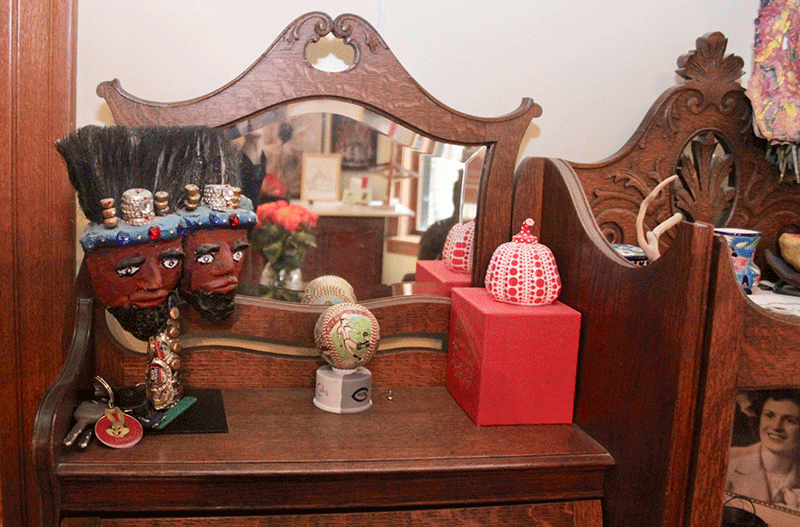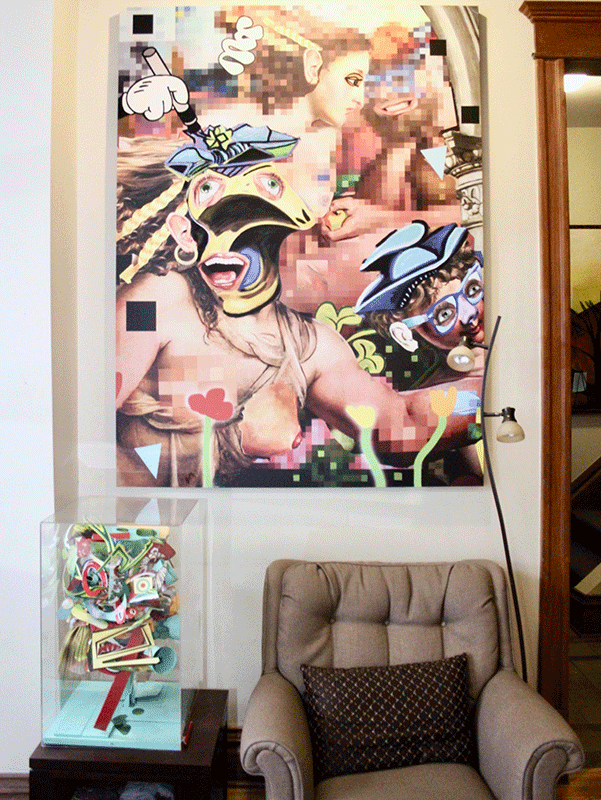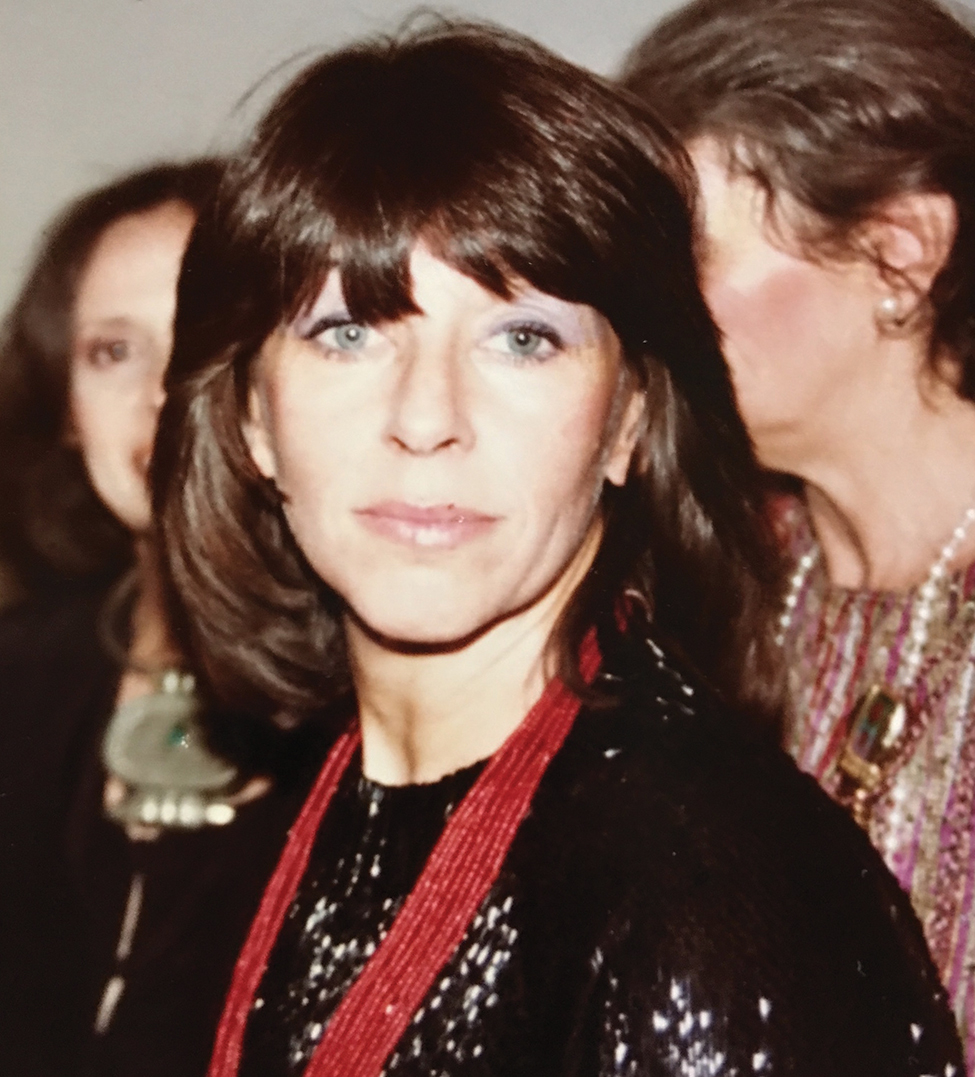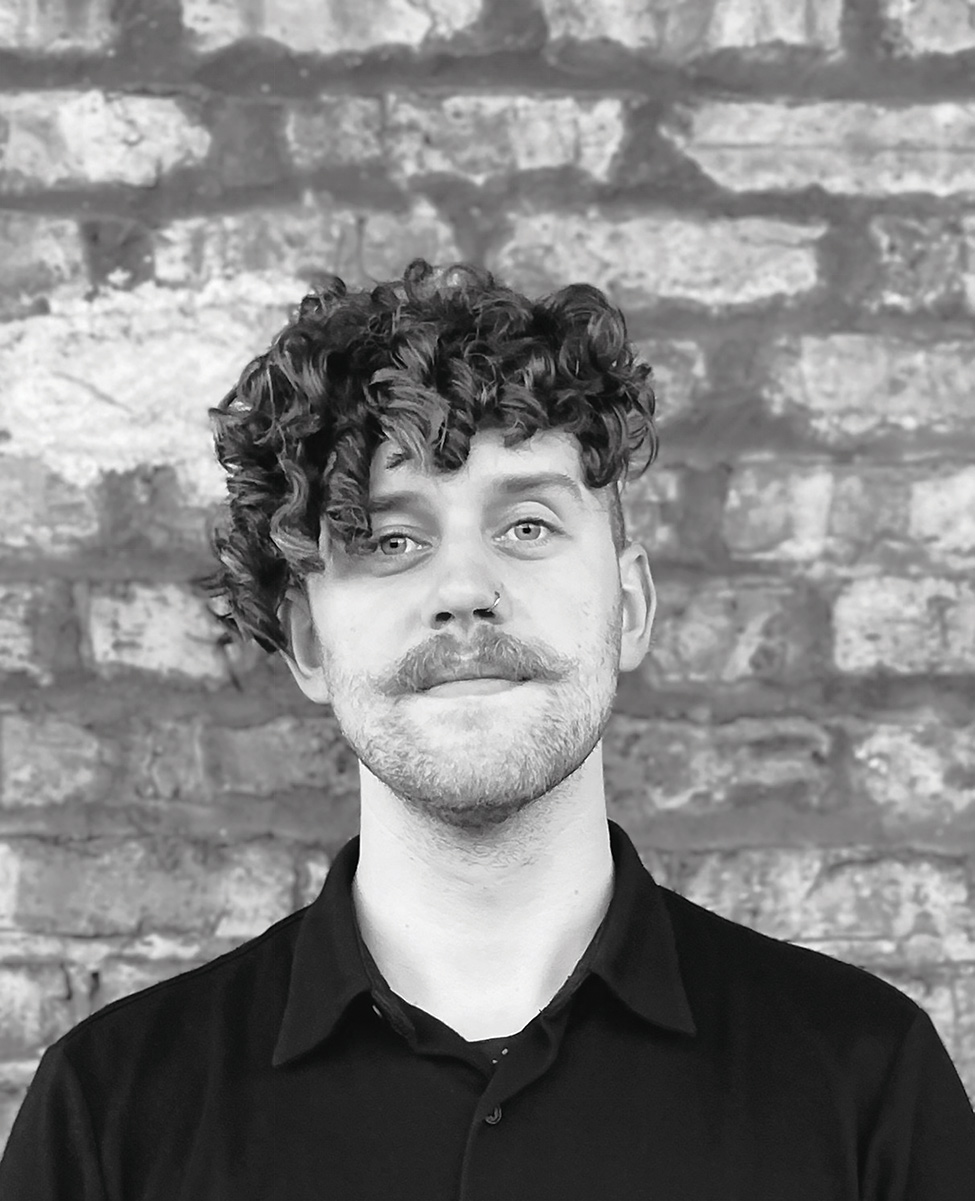Stewards of Art and History: The Expansive Collection of Lee Wesley and Vicki Granacki

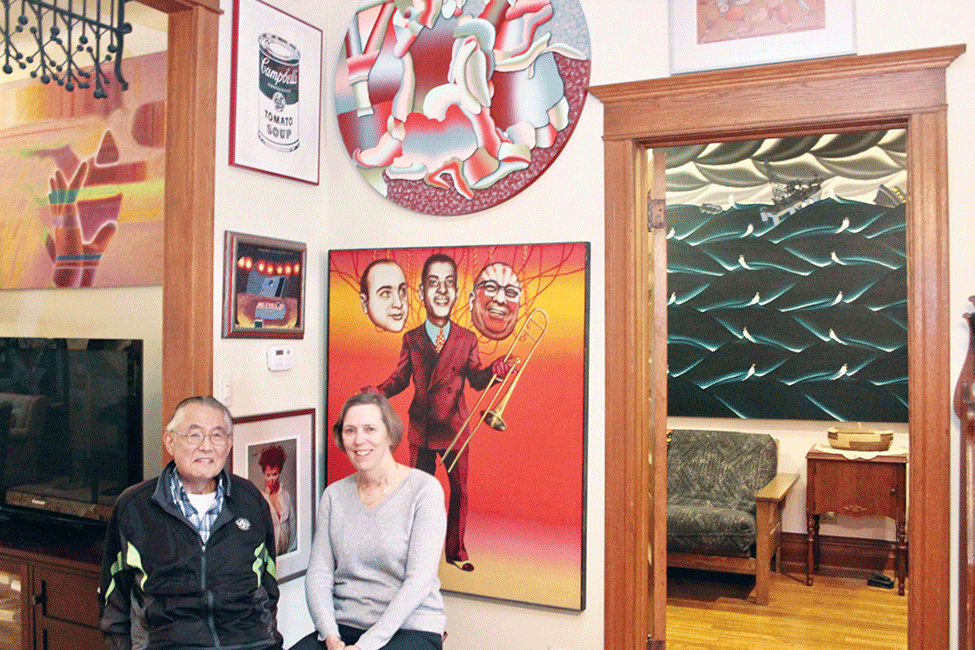
By GINNY VAN ALYEA
One late February morning I found myself driving to a sleepy part of Chicago and realized how much it would be transformed soon, once baseball season started in a few weeks. I was on my way to visit collectors Lee Wesley and Vicki Granacki, where the classic graystone exterior of the couple’s Wrigleyville home similarly revealed no hint as to the creative energy that I would soon discover inside.
I’d never met Vicki or Lee, but as soon as they welcomed me in, they seemed somehow familiar. Their home is first and foremost a place to live – as comfortable for the couple as well as the volume of art it contains. The antithesis of a stark white or glass cube, all angles and sharp edges, it’s distinctly old Chicago, framed inside by warm wood trim, lots of doorways and natural light. That this historic residence houses so much locally significant contemporary art makes perfect sense when I learn that Vicki runs a Chicago-based historic preservation firm, Granacki Historic Consultants, and she serves on the Emeritus Board of Landmarks Illinois and the Board of Directors of the Polish Museum of America. Lee is President of the Dr. Newton K. Wesley foundation Fund, continuing the legacy of his father’s pioneering work in contact lenses.
A minute after passing through the front door and taking off my coat, I was sitting on the sofa, which is essentially where the couple’s art collecting journey began.
It all started in the 1980s in a practical way, when the couple needed something to hang over their couch, which happened to be pink and velvet brocade. The pair had bought this distinctive piece of furniture in London at Harrod’s, the famous department store, and they had it shipped home to Chicago after their honeymoon.
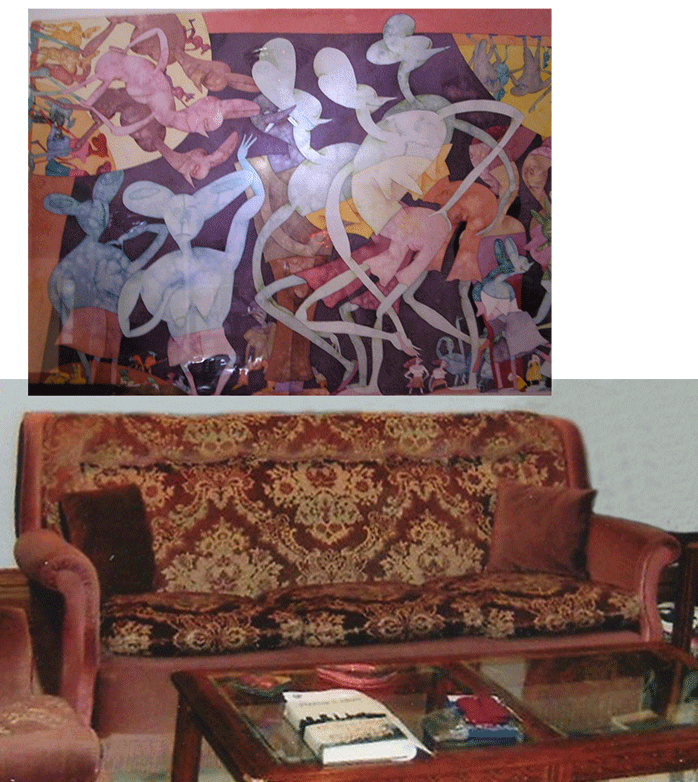
Vicki and Lee had long been interested in the Hairy Who – an artistic group formed in Chicago in the 1960s by graduates of the School of the Art Institute. Vicki says, “When our son was just over a year old we started hanging out in Chicago’s River North galleries on Saturday mornings. Our first purchase, in 1981 from Phyllis Kind Gallery, was a pinkish pastel watercolor, Duplicate and Triplicate by Gladys Nilsson, a member of the Hairy Who, whose mice-like figures could hold their own against our flowered suite.”
More than 38 years and over 125 works of art later they’ve had plenty of time to carefully build a significant collection that includes other Hairy Who members and associates, such as Ray Yoshida, Don Baum, Jim Nutt, Karl Wirsum, and Suellen Rocca. In addition, the collection includes pieces by Imagists such as Ed Paschke and Roger Brown, and Monster Roster member Seymour Rosofsky, not to mention dozens of other contemporary figurative artists – Phyllis Bramson, Joanne Carson, Robert Lostutter, Jim Lutes, and Hollis Sigler – who followed in their creative footsteps. To wander through Vicki and Lee’s home is to understand that their pursuit of art is serious and unending. Together they each have an eye for what may stand the test of time and trends.
Vicki’s childhood was filled with art, in part because her father was a commercial as well as amateur artist – many of his personal watercolor landscapes are hung throughout the house. Similarly, Lee was inspired by his father, whose creativity saved himself from blindness when he invented the first commercially successful contact lens. Lee’s own research team extended that tradition with development of the soft lens. Once Vicki and Lee became parents, they worked to make art a part of their children’s lives through hands-on art projects for each developmental stage, until adulthood. Among the many works of art hung on the walls of their home, several by their son and daughter fit in nicely alongside pieces by famous artists.
•
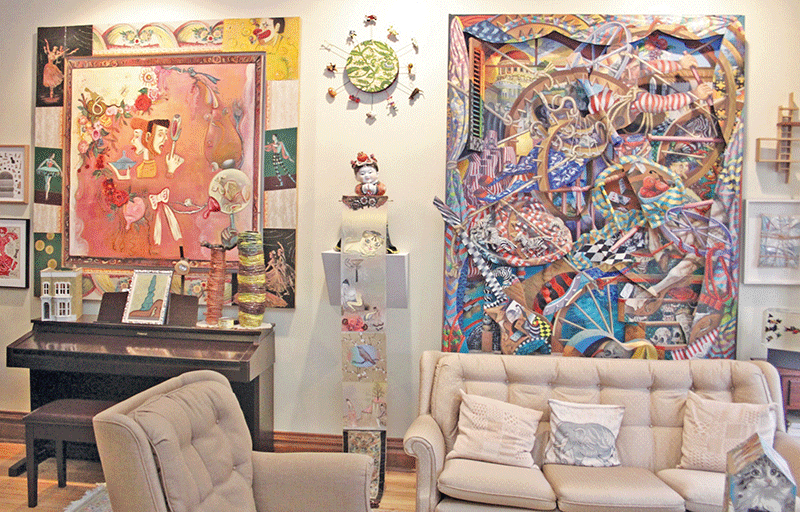
It’s not uncommmon for collectors, who may have been actively buying art for decades, to reach a natural stopping point. Vicki and Lee are not at that juncture. When we met just before March, they were preparing to head to New York to attend the spring art fairs, as they have for years. An important part of collecting for them is to continue to discover and support living artists.
Lee shared a story of when they were last at The Art Show in 2017, organized by the Art Dealers Association of America (ADAA) at the Park Avenue Armory. It was there that they encountered the powerful works of artist Nathaniel Mary Quinn, who happened to grow up in Chicago and was exhibiting with David Nolan Gallery. When the couple met the artist in the booth, they hit it off. As Lee remembers, “We just enjoyed being around him. And he has an incredible story to tell.” Lee recalled a backstory about Quinn, that after his mother Mary had died, he returned home from boarding school to the public housing apartment in Chicago where his family lived and found it empty. They had moved out while he was gone.
According to Lee, “We didn’t buy a work in New York, but later we visited Rhona Hoffman Gallery here [in Chicago] for a show of Quinn’s work and when we walked in and saw each other, it was like we were old friends. When we told him we had not been able to get a work of his yet, he said he wanted us to have a cherished portrait of his mother that was hanging in the gallery.”
Quinn’s narrative-driven portraits occupy a unique place on the art history timeline of Vicki and Lee’s collection, but they are also representative of the pair’s focus on contemporary figurative work that is rooted in Chicago’s artistic tradition.

The abundance of faces and figures throughout the couple’s home imbues each room with an energy that seems to come from not only on but also within the walls. Even in quiet moments, instead of solitude, it feels like action is happening somewhere; the collective energy made evident through color, complex narratives and examinations inspires a kind of continuous search for artistic themes and messages.
Explains Vicki, “Although our Chicago collection is the strongest and most coherent, we’ve taken side trips into realism and pop art. Besides painting and drawing, there are sculptures and photography in the mix. But above all the theme remains figuration, from the real and recognizable to the stylized, illustrative, and even truly weird.”
Lee adds that figurative art speaks volumes about that inspired spark found both in technology and art where human beings continually reinvent themselves.
•
Vicki and Lee frequent galleries, but as they strive to add to their collection they enjoy the hunt for rarer pieces, which are sometimes acquired at auction. The couple has maintained their interest in the Hairy Who ever since they first began buying art, but renewed interest nationally, most notably when the Art Institute of Chicago hosted an exhibition of the Hairy Who’s work in 2018, means increased competition for anything related to shows that took place during the 1960s. Yet sitting on a glass coffee table in the living room, next to a Don Baum house with a cutting board for a foundation, are the newest additions to the couple’s collection, won just last year at Leslie Hindman Auctioneers: a pair of comic books, and a flyer, published to accompany the first Hairy Who exhibitions held between 1966 and 1968, illustrated and autographed by member artist Karl Wirsum. There is also a cloth covered catalog, Who Chicago? An exhibition of contemporary Imagists, published in 1980 and packaged with an etching by Jim Nutt.
Looking at this table filled with precious, temptingly touchable pieces of history and works of art, I asked if they had brought these objects out for me, or if they’re regularly so accessible. Vicki says, referring to their young grandchildren, who live locally and come over often, “We leave these out and encourage our grandchildren to touch the art. These are things they enjoy.”
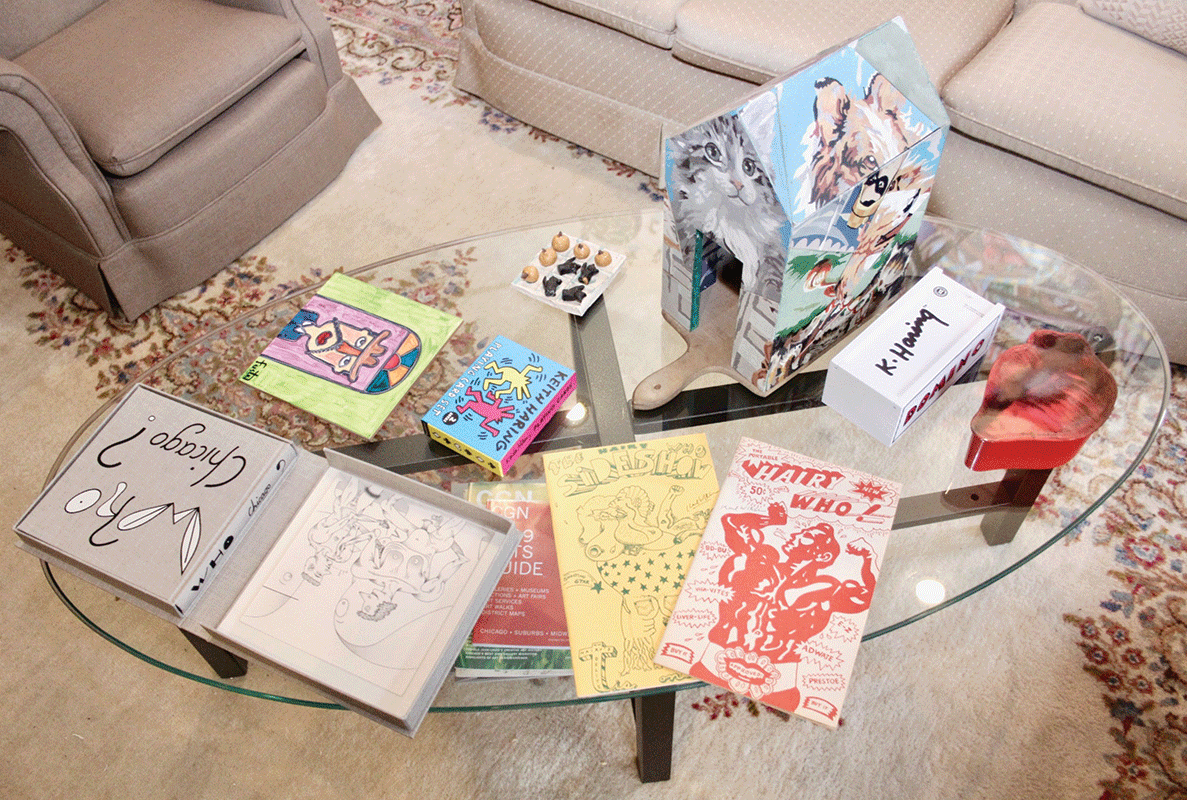
Despite having actively collected for so long Vicki and Lee have kept their passion mostly to themselves. Their daughter, Monica, married a man also passionate about art, and he has encouraged them to enjoy their collection through sharing it. The most significant step so far towards celebrating the assembling of these 125 plus works may is a private project to catalog each piece, noting relevant details on each work – artist, title, date, dimensions, acquisiton and so on – as well as artistic groupings. The resulting booklet, which continues to be updated and is sometimes brought along to art fairs and galleries, provides a tidy, personal summary of the works that comprise this unique collection.
Before I ended my morning on the Northside, Vicki took me into one last room upstairs in their home, where, tucked away were items not officially part of the couple’s collection: watercolors, maps, and journals created by Vicki’s father, Leon Granacki, during his four years spent serving in the US Army 132nd Infantry Regiment in the South Pacific during WWII, from 1941–1945. Explains Vicki, “He rose from private to Master Sergeant, and while attached to the G-2 Intelligence Section, prepared original maps and target photos used by both ground and air troops.” Today she’s using her professional experience in historic preservation to capture and save what’s so beautiful and important about her father’s work. She says, “His small but historic contribution was to a cause larger than himself.”
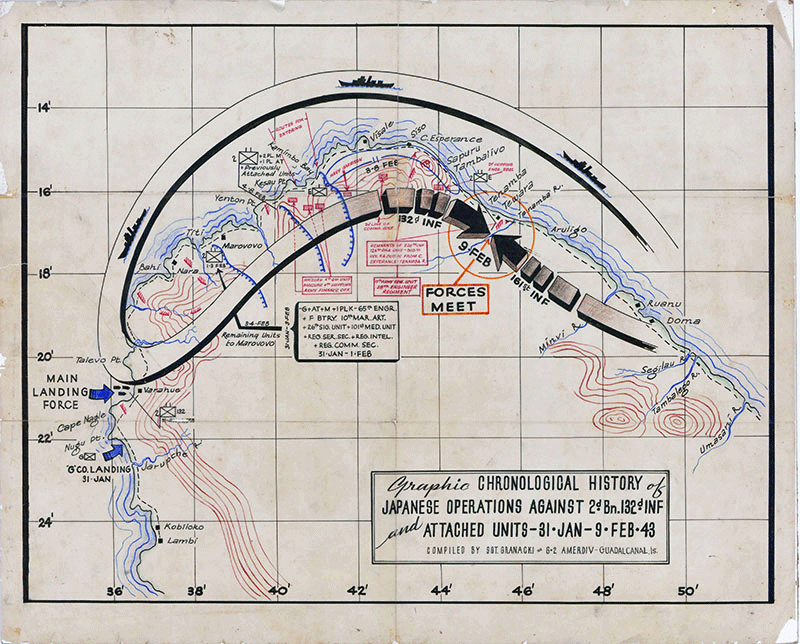
This effort, along with Lee’s work finding a home for his father’s collection of artifacts tracing the innovative history of contact lenses, also informs how they think about their art collection. Though Vicki and Lee have spent decades learning about, acquiring and living with art, ultimately they believe that they are just caretakers.
“I’ve always thought especially about being a steward of the historic buildings that we live, work, and worship in," says Vicki. "They were built by our ancestors, and if we care for them kindly and properly, will be enjoyed by our descendants. That’s what my career in historic preservation was about. As part of our work we were always doing research – looking for maps, plans, sketches, photos and journals that identified who came before us and what they created. We would be so excited to find records kept by ordinary people of the world around them. I have this idea that someday someone else may be looking for something that I’ve taken care to collect and put in a public archive or museum and they will be just as excited to find my treasure.”
Additional images from the collection:
